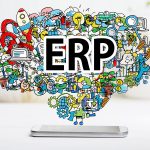Just two years ago, Gartner made one of their memorable reports that “IT infrastructure” is on the way to obsolescence. The outcome, most likely, “will be building a ‘new information economy.’”
It may not be a profound vision, but Gartner did point to the use of the cloud by companies as an appealing, cost-cutting and scalable solution to improving across-the-board profitability.
What’s more, cloud-computing’s offerings remain favorable for SaaS ( software as a service). According to Gartner’s head of research, Peter Sondergaard:
“Eighty percent of businesses use some SaaS services, but 80 percent of IT use is in “private cloud.” Sondergaard said there are two versions of the cloud computing future developing: the kind used by most individuals and the kind being pushed by enterprise IT. This will eventually have to come together, he said.
As such, the deployment of Microsoft Dynamics cloud computing makes it ideal not only from the subscription levels offered, but also how accessible it is today’s workplace world of BYOD.
What’s more, Dynamics CRM mobility means viewing data that is fully-synced.
Today, the far-ranging use of ERP and CRM software by businesses, and organizations, is enhanced through the option of using a cloud-based hosting services from participating Microsoft partners. Benefits include doing away with expensive (capital expenditures) equipment upgrades, or software purchases for multiple desktops throughout many locations.
When Microsoft first made Dynamics ERP available online back in 2009, the firm highlighted the software’s new offerings that allowed users also integrate their use of:
“… Sites Service built on the Windows Azure platform, a new Commerce Service, and an new Commerce Service, and an expansion of its Payment Service.”
Discover the many dimensions of Microsoft Dynamics SaaS capabilities, whether for ERP or CRM software. Contact us for more information.
{{cta(’52a6f94c-7ea9-4a8d-bf2d-9432e3c12709′)}}





